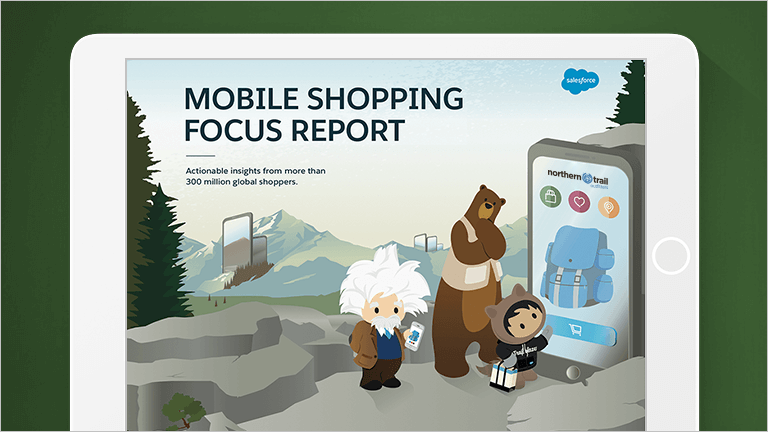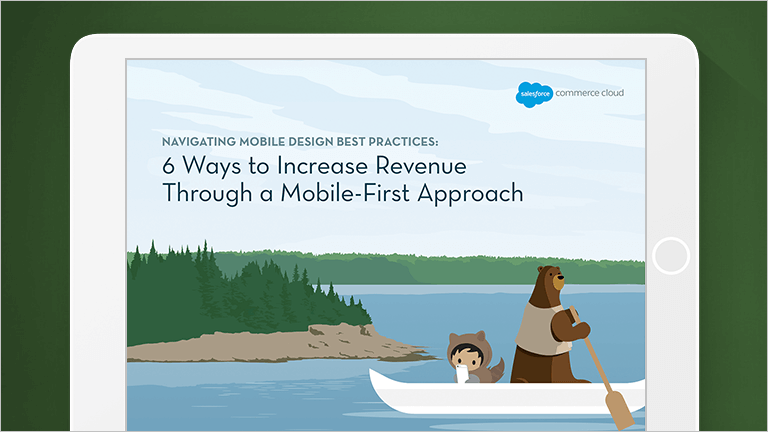PUMA IS A TRAILBLAZER
Discover how PUMA stays “forever faster” with a truly mobile-first approach.
Move the needle on mobile conversions.
Learn six ways to master mobile site design.
Discover the power of Commerce Cloud Digital.
PUMA leverages the power of Salesforce to relaunch its mobile sites and speed past customer expectations.
In a move that highlights the growing importance of mobile, PUMA has overhauled and relaunched its mobile websites in some 24 markets worldwide.
“Shoppers may buy from PUMA.com, or they may be in one of our wholesalers or retailers, or just walking down the street and see one of our products,” said Ken Kralick, PUMA’s Global Head of Ecommerce.
“They may use their phone to learn about the brand. So we need to focus on the mobile customer experience so they can do that very quickly. You have to balance that with the ability to show a big product catalog and represent the brand.”
Mobile is the top shopping method for PUMA customers.
It’s no surprise that Kralick speaks so confidently about the power of mobile. At PUMA, mobile traffic in some geographies was approaching 70%, which is even higher than Salesforce’s recent Shopping Index report that reveals that mobile accounts for 60% of traffic and 41% of orders.
But, like many brands, the high mobile traffic wasn’t translating to conversions. PUMA decided to re-architect its sites so that shoppers can easily create accounts and save carts for future checkouts on a tablet or desktop.
“We were very happy with the results. Clearly, the defining metric of the test was the revenue lift.”
How Commerce Cloud’s Storefront Reference Architecture made all the difference.
Engineered through a data-driven design analysis of device traffic patterns and shopping behavior on over 2,000 storefronts, Commerce Cloud’s Storefront Reference Architecture provides merchants with best practices in mobile UX design, merchandising, and technical architecture to improve conversion and enhance the mobile shopping experience. With over 200 wireframes that model intelligent storefront design, direct ownership of storefront code empowers merchants to build unique and differentiated sites.
Kralick explained the benefits of the Storefront Reference Architecture implementation by saying, “We rolled it out as a true reference architecture with multiple countries, multiple currencies, multiple languages and continuous integration, so we can have a solid, future proof, mobile-first platform to build off globally.”
PUMA now delivers intelligent, mobile-first sites that are ready for anything.
PUMA is a trailblazer disrupting the industry with limited interruptions.
PUMA now has the agility to make experience-enhancing tweaks to its site, constantly iterating based on real consumer behavior. For example, PUMA refined the top navigation and internal search, based on Salesforce’s advice and best practices.
“Without changing any product, without doing any price-point changes, that tweak increased conversion,” Kralick said. “We’re scalable. We’re releasing improvements more often. We’re testing and able to prove and disprove hypotheses quickly in a way that we couldn’t on other platforms.
The results of the PUMA and Salesforce relationship? Fast and immediate.
Since the relaunch of PUMA’s mobile sites in July 2017, they now render and fully load 35% and 69% faster, respectively, resulting in image load times of less than two seconds on the product detail page. Conversion has improved from less than 1% to nearly 1.5%.
“The fact that it’s faster and helps us sell more and we can get to market faster — and that Salesforce has truly as an organization partnered with us —, I can’t tell you how important that is.”
In re-architecting its sites around mobile, PUMA is truly living by its tagline,“Forever Faster.”
For retailers, being mobile-first is a journey that involves technology, organizational alignment, and much more. Check out our interactive step-by-step guide to mastering mobile commerce, and get the latest insights into how to put mobile at the center of your growth strategy.
Keep exploring stories like this one.
Questions? We’ll put you on the right path.










